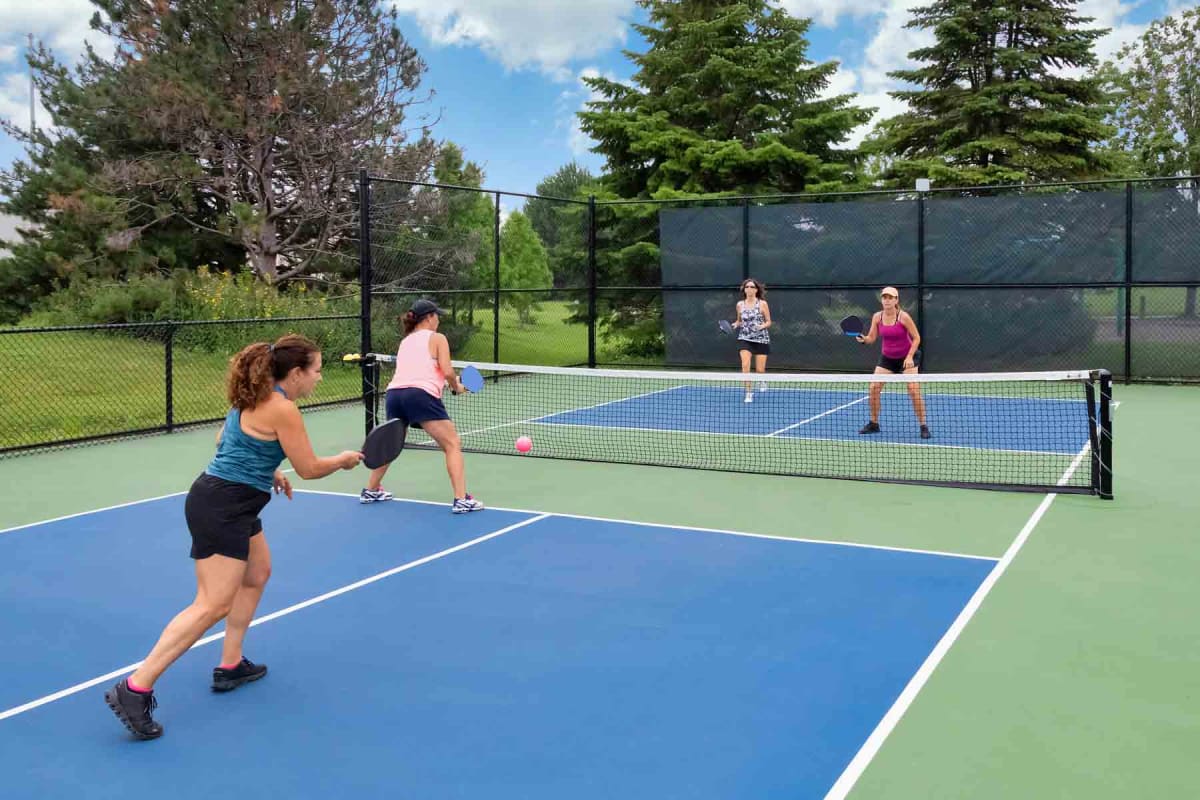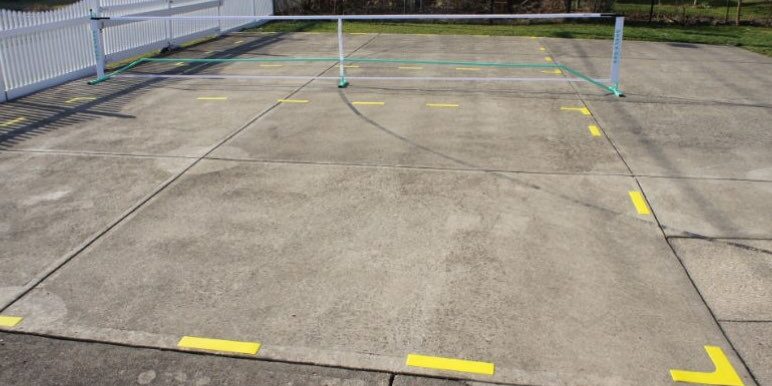Achieve Perfect Capacities: Trick Considerations for Pickleball Court Building And Construction
The construction of a pickleball court requires meticulous focus to different critical dimensions and variables that influence both gameplay and player experience. Requirement measurements, including the essential non-volley zone and overall court location, need to be abided by in order to make certain conformity with official policies. Nonetheless, the option of surface area materials, reliable drainage systems, and correct clearance around the court are similarly essential considerations that can significantly affect long-term functionality and safety. As we explore these factors, it becomes apparent that neglecting even a minor detail can cause substantial effects for court performance and gamer complete satisfaction.
Authorities Court Capacities
When thinking about the building and construction of a pickleball court, understanding the official court dimensions is vital. The common measurements for a pickleball court are 20 feet large by 44 feet long for both singles and increases play. The layout includes a non-volley area, commonly referred to as the "kitchen area," which extends 7 feet from the internet on both sides - Pickleball court construction company. This area is vital, as it limits players from volleying the sphere while standing within this area, advertising critical play.
The web elevation is one more critical dimension, evaluated 36 inches at the sidelines and 34 inches in the center. Appropriate web height makes certain justice and uniformity across all courts. In addition, the complete suggested location for a law pickleball court, consisting of buffer areas, is around 30 feet by 60 feet, permitting safe activity and play.

Surface Material Option
Selecting the ideal surface product for a pickleball court dramatically influences gamer efficiency and security. Various materials are available, each with unique qualities that can improve gameplay. Common choices consist of asphalt, concrete, and specialized sports surfaces such as cushioned acrylic or polyurethane.
Asphalt is a prominent choice due to its price and longevity; however, it can end up being rough over time, possibly causing gamer injuries. Concrete offers a durable and resilient surface however might do not have the necessary grasp and shock absorption throughout play.
Cushioned acrylic surface areas are increasingly favored for their capacity to supply enhanced convenience and safety, as they lower the effect on joints - Pickleball court construction company. These surfaces also provide excellent grip and can be customized with different shades and textures, enabling visual charm
Additionally, the selection of surface materials need to take into consideration environment and ecological factors, as some choices might do much better in details climate problems. Inevitably, see here now choosing the ideal surface product is vital for developing a secure, delightful playing experience that fulfills the demands of all players.
Water Drainage and Water Management
Efficient drain and water monitoring are vital elements of pickleball court building and construction, as they directly affect the durability and usability of the playing surface area. Proper water drainage systems are critical to stop water buildup, which can lead to surface wear and tear, mold and address mildew development, and security hazards for players.
To achieve ideal water drainage, the court needs to be constructed with a slight slope, commonly around 1% to 2%, guiding water away from the playing area. Furthermore, including drain channels or French drains pipes around the border can successfully take care of excess water runoff. These systems should be made to take care of neighborhood rainfall patterns and dirt conditions to make sure performance.
Water monitoring expands past drainage; it also involves the option of ideal surface materials that can endure exposure to moisture without jeopardizing efficiency. Regular upkeep, including assessments for obstructions and debris build-up, is vital to make certain the drain systems continue to be practical.
Lighting and Visibility
Ensuring appropriate lighting and visibility is important for boosting the pickleball playing experience, particularly throughout night or low-light conditions. Sufficient lighting not just boosts visibility for gamers but likewise guarantees security by decreasing the danger of accidents. When developing a pickleball court, it is important to analyze the format and choose lights components that supply uniform illumination throughout the entire having fun surface area.
LED lights are typically recommended as a result of their energy efficiency and long life. The positioning of these fixtures is vital; they ought to be positioned to lessen darkness and glow while making the most of insurance coverage. An usual approach is to set up lights at a height of 20 to 30 feet and at an angle that guides light onto the court without creating disturbances to gamers.
Additionally, it is vital to take into consideration the shade temperature of the lights. A cooler white light can boost exposure and deepness understanding, enabling players to track the sphere better. Additionally, dimmable alternatives might be helpful to readjust lights degrees according to varying problems. By focusing on thoughtful lighting design, court building contractors can considerably improve the overall playing experience for all participants.
Surrounding Location Considerations
Usually ignored, the bordering area of a pickleball court plays a considerable function in the total functionality and satisfaction of the facility. Sufficient space around the court is important for gamer security, allowing participants to relocate openly without the danger of colliding with spectators, challenges, or boundaries. A minimum clearance of a minimum of 10 feet like this on all sides is suggested to ensure gamers can react to the dynamics of the video game without obstacle.
Furthermore, the choice of surface materials in the bordering location can influence player convenience and efficiency. Grass, gravel, or rubberized surface areas can aid alleviate injuries by providing a softer landing location. Additionally, proper drain is crucial to prevent water build-up, which can bring about dangers or damage to the court surface area.
Availability for all users, including paths leading to the court, need to be focused on to ensure a comprehensive setting for everybody wishing to enjoy the video game of pickleball. By thoughtfully planning the surrounding location, center operators can improve the general experience for gamers and spectators alike.

Conclusion
Finally, attaining perfect dimensions for pickleball court building calls for cautious focus to main court sizes, surface area product option, efficient drainage, and sufficient lights. In addition, consideration of the surrounding area enhances gamer safety and security and convenience. By adhering to these crucial factors, the building and construction of a pickleball court can offer an ideal having fun setting, ensuring both performance and sturdiness for several years to come. Focusing on these components will inevitably add to an effective and satisfying pickleball experience.